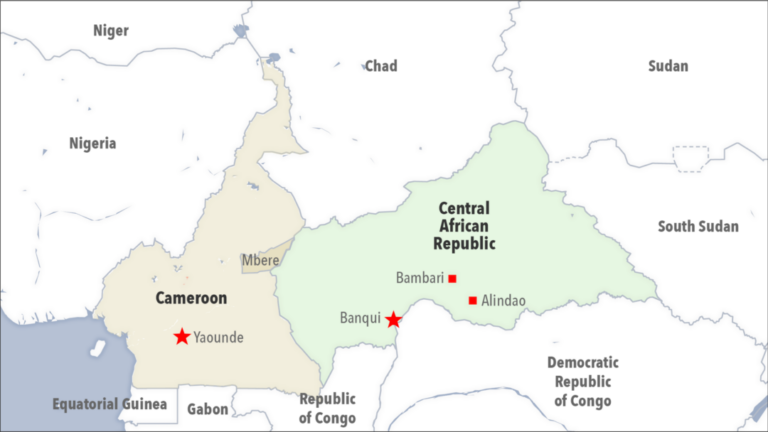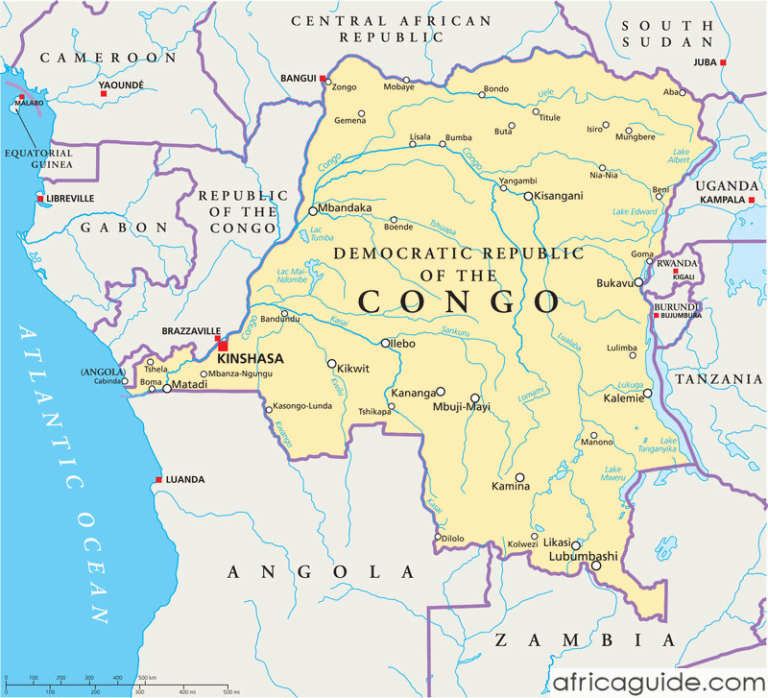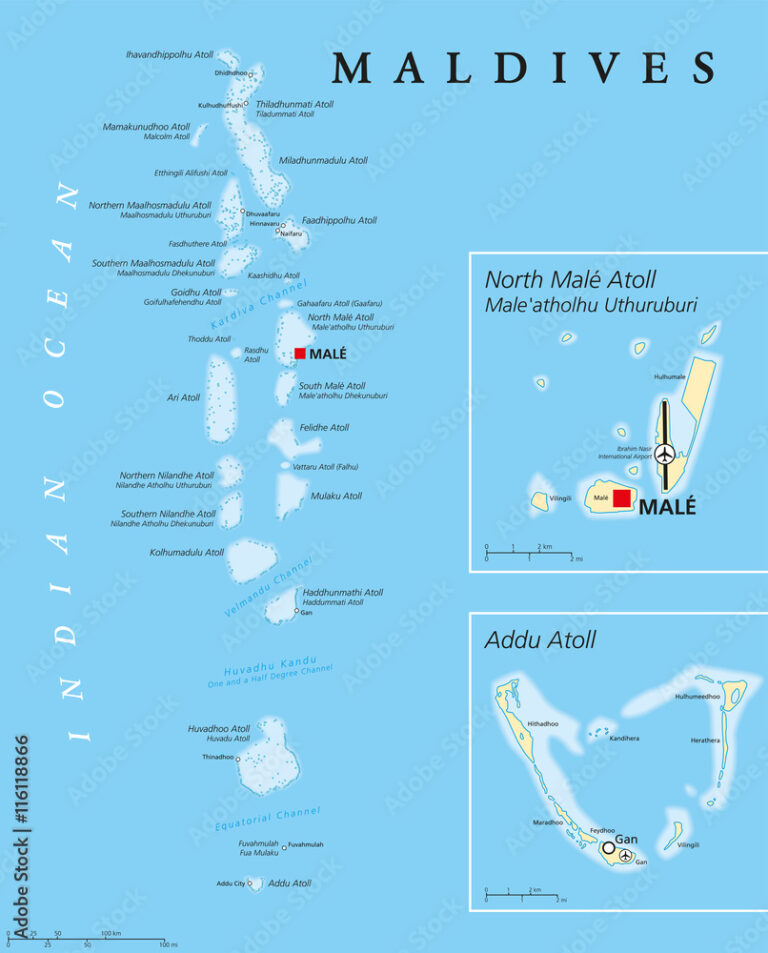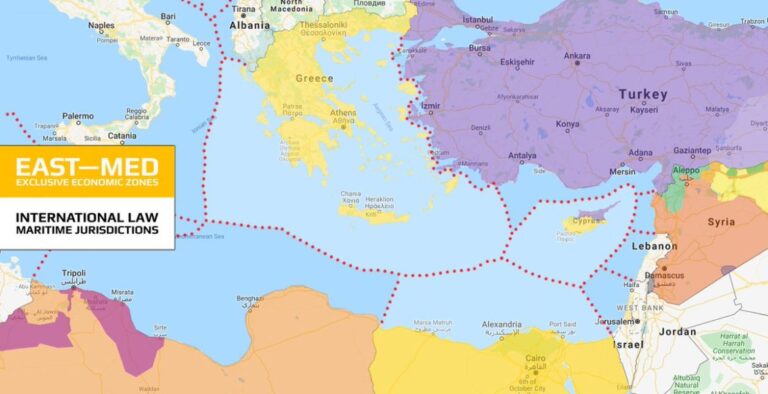Guinea Neighbouring Countries and West African Map
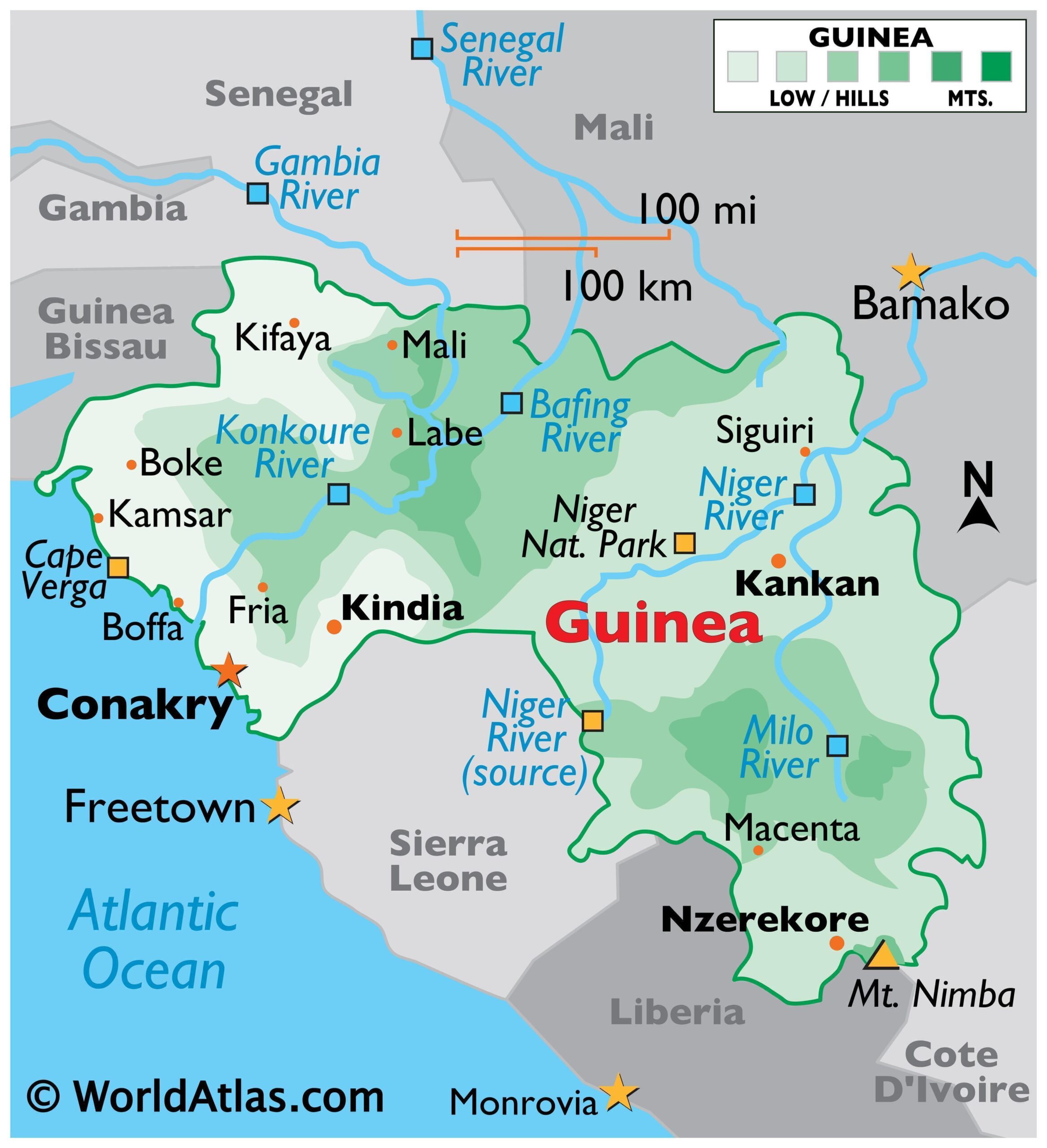
Guinea’s Neighboring Countries
Guinea hangs out with six pals in West Africa. The borders with these countries give Guinea its spot in the neighborhood’s pecking order.
Southern Neighbors
Down south, Guinea cozies up to Liberia and Sierra Leone. These aren’t just lines on a map—these countries have shared a bit of history and culture.
| Country | Location |
|---|---|
| Liberia | South |
| Sierra Leone | South |
Northern Neighbors
Look to the north, and you’ll find Guinea rubbing shoulders with Guinea-Bissau and Senegal. They hold down the northwest and north spots, making sure Guinea stays right at home in West Africa.
| Country | Location |
|---|---|
| Guinea-Bissau | Northwest |
| Senegal | North |
(Economy of Guinea – Wikipedia)
Eastern Borders
On the east side, Mali and Côte d’Ivoire (Ivory Coast) are the neighbors. Their presence on the northeast and southeast flanks is a big deal for trade and making friendly deals.
| Country | Location |
|---|---|
| Mali | Northeast |
| Côte d’Ivoire | Southeast |
These borderlines do more than just mark territory—they’re key to how Guinea mingles with the countries next door. Curious about how geography shapes relations elsewhere? Check out the scoop on countries like Ecuador’s neighbors and Liberia’s neighbors.
Guinea’s Resource Reserves
Guinea’s got more natural resources than a squirrel has acorns, making it a big shot in the mining biz. Let’s take a closer look at Guinea’s treasure troves of bauxite, iron ore, and precious goodies like diamonds and gold.
Bauxite Reserves
Guinea’s sitting on a mountain of bauxite, and when we say mountain, we’re talking around one-third of the world’s stash (Economy of Guinea – Wikipedia). Bauxite’s the stuff they turn into aluminum, which is super handy for making everything from planes to soda cans.
| Resource | Quantity | World Ranking |
|---|---|---|
| Bauxite Reserves | 7.4 billion metric tons | 2nd |
Back in 2021, a hefty chunk—33.7%—of what Guinea sold to other countries was bauxite (International Trade Administration). The Ministry of Mines said that in 2022, they managed to ship out even more than the year before, raking in the dough.
Iron Ore Deposits
But Guinea doesn’t stop at bauxite. It’s got a big old stockpile of iron ore, too. Over four billion tons of this top-quality iron ore are just waiting to get dug up (International Trade Administration).
| Resource | Quantity | |
|---|---|---|
| Iron Ore | 1.8 billion metric tons (high-grade) |
With iron ore projects popping up like mushrooms after rain, Guinea could soon be selling left and right. This could turn mining into a major breadwinner for the country in years to come.
Diamond and Gold Resources
Now, onto the real bling: diamonds and gold. Besides bauxite and iron, Guinea’s earth is hiding a good share of these sparkly and shiny minerals.
| Resource | Production (2021) | |
|---|---|---|
| Gold | 17 metric tonnes | |
| Diamonds | Significant reserves |
In 2021 alone, Guinea churned out 17 metric tonnes of gold, holding its own in the global gold rush (Wikipedia). The diamonds? Well, those reserves are pretty shiny themselves, pitching in to keep the nation’s economy on track.
If you’re curious about the neighborhoods of other nations, check out our tells-all on Dominican Republic Neighbors and Ecuador’s Pals Next Door.
Guinea’s Economic Impact
Guinea, a country sitting on a goldmine of natural goodies, has its economy gravitating around foreign investments and an all-star mining scene that keeps it buzzing.
Chinese Investments
Chinese dollars have made quite the splash in Guinea’s economic pool. Back in 2009, the China International Fund dropped a whopping $7 billion for infrastructure makeovers, sealing China’s spot as Guinea’s right-hand man in big mining gigs. These funds laid down roads, railways, and ports—all-important for zipping around Guinea’s mega mineral treasures.
Strategic Mining Projects
Digging and hauling rocks is Guinea’s bread and butter. The nation has bragging rights as the second-biggest bauxite exporter. Just last year, over 102 million tons made their way to the rest of the world. Major players like Rio Tinto and Alcoa are knee-deep in Guinea’s mining scene. Mining made up a big chunk—say 84%—of what Guinea sold abroad in 2021. The focus is on bauxite and gold; together, they’re economic heavyweights creating jobs and pumping money into national piggy banks.
Mining Controversies
Now, it ain’t all gold and glitter in the mining arena. Guinea’s scene has its fair share of drama with tales of bribes and murky deals creeping into the headlines. Such shenanigans can wreck dreams of lasting prosperity and put the country’s mining fame on shaky ground.
To keep things on the up-and-up, Guinea could bolster its rules and play the transparency card in mining affairs to hold investor trust and keep its global rep solid.
Want to know more about where Guinea fits in the world? Peek at our stories on equatorial guinea neighboring countries and liberia neighboring countries.
Papua New Guinea Borders
Papua New Guinea sits proudly in the southwestern Pacific Ocean famous for its mix of jaw-dropping landscapes and important coastal settings. Let’s take a look at its land links, sea frontiers, and standout geographic features.
Land Border
Papua New Guinea cozies up to Indonesia, sharing a boundary that runs roughly 820 kilometers, slicing through the shared island of New Guinea. On Indonesia’s side, you’ll find the provinces of Papua, Highland Papua, and South Papua being its neighbors.
| Border Country | Border Length (km) | Notable Regions |
|---|---|---|
| Indonesia | 820 | Papua, Highland Papua, South Papua |
Maritime Boundaries
Now, when we talk about the sea, Papua New Guinea mingles with a few big players around it, like Australia down south and the Solomon Islands over to the southeast. These watery borders are not just for show – they matter big time for trade and ocean resources.
| Neighboring Country | Direction | Maritime Boundary |
|---|---|---|
| Australia | South | Torres Strait |
| Solomon Islands | Southeast | Bougainville Strait |
Geographical Features
Mother nature sure went wild here, stacking Papua New Guinea with some of her best work. Think volcanoes unraveling their fiery tales, ground-shaking earthquakes, and those sneaky tsunamis, all thanks to this spot on the Pacific Ring of Fire. Add in shaky landslides, sometimes stirred up by cutting down trees too much.
- Volcanic Activity: The place is a hotbed for volcanoes, constantly tinkering with the lay of the land.
- Coastline and Islands: Do the math: 5,152 km of coastline. Islands like Mussau to the north and Sudest to the south pack in even more natural spice.
- Watersheds and Rivers: The Fly River doesn’t just sit pretty – it marks part of the border with Indonesia, hitting the western tip just right.
This unique lineup of natural goodies makes Papua New Guinea a wonder and a warrior against geological drama. Feel free to dive into our other articles on neighboring lands, such as guinea neighboring countries or ecuador neighboring countries, for more geographical adventures.
Papua New Guinea’s Geography
When you think about an explosion of nature’s wonders, Papua New Guinea is definitely at the forefront. Nestled in Oceania, this place boasts some jaw-dropping scenery and landscapes teeming with life. It’s got volcanoes, sandy stretches, and a load of islands.
Volcanic Activity
If you like a bit of drama, Papua New Guinea won’t disappoint. It’s perched on the Pacific Ring of Fire, which means volcanoes and earthquakes are just another Tuesday around here. It’s crawling with active volcanoes, thanks to its rowdy tectonic whereabouts. Landslides are also a no-brainer, given the mountain ranges and deforestation going on in its lush forests, making Mother Nature a real live-wire (Source).
| Natural Disasters | Likelihood |
|---|---|
| Volcanic Eruptions | High |
| Earthquakes | High |
| Tsunamis | Medium |
| Landslides | High |
Coastline and Islands
The coastline’s a stunner, clocking in at over 5,000 kilometers (Source). Throw in the bunches of islands, and you’ve got yourself a nature lover’s dream with all kinds of critters and plants. With Australia down south and the Solomon Islands hanging out to the southeast, Papua New Guinea is kind of a big deal in its hood.
Standout coastal features and island spots:
- Mussau Island (top of the heap in the north)
- Sudest Island (hugging the bottom in the south)
- Olava, Bougainville (over on the eastern edge)
- Fly River close to Indonesia or Mabudawan (chilling on the west)
Island Country Statistics
Papua New Guinea isn’t just another pretty face in the ocean. It’s the 3rd biggest island nation on the globe, covering a whopping 178,700 square miles. That’s massive in the world of island countries (Source).
| What’s What | How Much? |
|---|---|
| Coastline Length | 5,152 km (3,201 mi) |
| Land Area | 178,700 mi² |
| Largest Island Country Rank | 3rd |
Understanding Papua New Guinea’s geography gives us a peek into its wild world and the hurdles it jumps because of its cool but tricky spot. If you’re curious about who’s living next door, check out our guides on equatorial guinea neighboring countries or ethiopia neighboring countries.
Guinea’s Storied Past
Take a peek into Guinea’s past, and you’ll find a rollercoaster of events that have molded its social, political, and economic landscape. Heavy hitters like the fight for independence, Cold War tensions, and aftereffects of gaining freedom have played starring roles.
Independence Struggle
Guinea waved goodbye to French rule on October 2, 1958, becoming the first French-speaking African country to do so. This gutsy move was spearheaded by the Guinea chapter of the African Democratic Rally (RDA) with a bold “No” to the Loi Cadre, casting off the shackles of colonial rule. This act of defiance set the stage for other African countries dreaming of their own escape from colonial ties.
Cold War Clashes
Independence wasn’t all smooth sailing. In the thick of Cold War politics, Guinea found itself buddying up with the Soviet Union due to fears of French retaliation. Despite claiming to support nationalism, Sekou Toure’s government was pretty tight-fisted with power, staying in charge until he passed in 1984. Development stalled, and folks were far from impressed with his autocratic ways.
Freedom’s Aftermath
When Sekou Toure shuffled off this mortal coil, things got real messy, real quick. Lansana Conte’s death in 2008 opened the door for Moussa Dadis Camara’s military coup. Guinea became a hotbed of unrest with Camara’s strongman regime leading to political chaos and uprisings. His time in office ended in a rush to Burkina Faso after an attempted overthrow.
During the ’90s and 2000s, protests became a routine as people voiced out against bleak economic conditions and glacial political reforms. The shift to a democratic setup was anything but smooth, with constant delays in holding elections. Fear of ethnically skewed actions and power struggles loomed large till the eventual election on November 7, 2010.
For those hungry to understand political scenes in other regions, our pieces on Dominican Republic Neighbors and Ecuador Neighbors can offer some solid nuggets of knowledge.
This glimpse into Guinea highlights its uphill battles and the persistence that has shaped today’s political weather. If you’re curious about places edging Guinea, dig into our maps and deep dives on Equatorial Guinea Neighbors and Ethiopia Neighbors.

